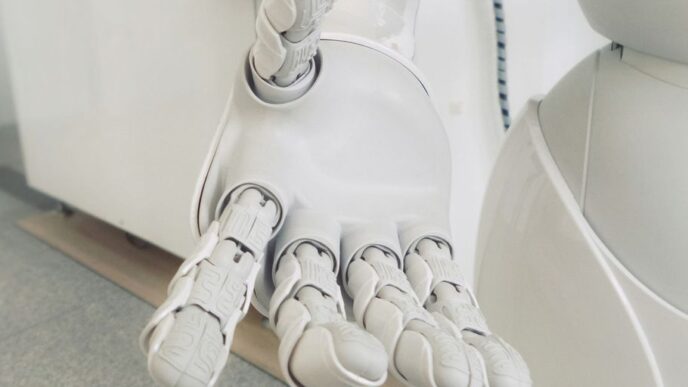Welcome to a world where justice is blind, but not without its biases. The criminal justice system, despite its noble intentions, has long been plagued by hidden biases that have devastating consequences for countless lives. But fear not, for a groundbreaking solution has emerged: Explainable AI. In this article, we will explore the concept of hidden biases in the criminal justice system and delve into the transformative potential of explainable AI. Join us on this enlightening journey towards a fairer future for all.
Introduction to Explainable AI
Artificial intelligence (AI) has made remarkable progress in recent years, becoming more sophisticated and advanced. However, as AI systems become more complex, understanding how and why they reach certain conclusions becomes increasingly difficult. This lack of transparency can have serious implications, particularly when it comes to life-or-death decisions made by AI systems, such as those used in the criminal justice system.
Explainable AI is a field of AI research that aims to make AI systems more transparent and understandable. These systems provide explanations for their decisions in plain language that is accessible to non-experts.
The Benefits of Explainable AI
Explainable AI offers numerous benefits. By understanding how and why an AI system arrived at a particular conclusion, users can have more confidence in its results. Furthermore, explainable AI helps uncover hidden biases in data sets or algorithms, preventing unfair or inaccurate outcomes. It serves as a valuable check against flawed automated decision-making.
The Impact of AI on Criminal Justice Systems
The use of AI in criminal justice systems is becoming increasingly prevalent. However, the hidden biases of AI can be difficult to detect. Explainable AI plays a crucial role in uncovering these biases and ensuring fairer and more just outcomes.
One example is the use of predictive policing, which employs AI to identify potential crime hotspots. If the data used to train the AI is biased, the predictions it makes will also be biased. This can result in disproportionate deployment of police resources in certain areas, impacting communities of color more heavily.
Explainable AI addresses this issue by providing a clear understanding of how the AI system arrived at its predictions. This understanding can then be used to correct any biases present in the data. Thus, explainable AI has the potential to revolutionize the criminal justice system by promoting fairness and justice.
Understanding Hidden Bias
Hidden biases significantly affect the outcomes of criminal cases within the supposedly fair and objective criminal justice system. These biases manifest in various ways, such as judges giving harsher sentences to defendants perceived as dangerous or aggressive. Additionally, evidence shows that police officers are more likely to target and stop black and Hispanic drivers compared to white drivers.
These biases have detrimental impacts on people’s lives and can even lead to wrongful convictions. It is crucial to address hidden biases in the criminal justice system. Explainable AI can play a pivotal role in this by uncovering hidden biases through data analysis, enabling steps to mitigate them in future cases.
Identifying and Measuring Hidden Bias in Criminal Justice Systems
Hidden bias in the criminal justice system takes many forms, from disparities in law enforcement treatment of different groups to the application of sentencing guidelines. As data-driven decision-making becomes more prevalent, it is crucial to find ways to address this issue.
Explainable AI techniques offer a promising approach to identify and measure hidden bias in criminal justice systems. This not only helps detect bias but also provides insights into its operation and impact. Armed with this information, steps can be taken to mitigate bias and create fairer systems for everyone involved.
Using Explainable AI to Reduce Discrimination in Criminal Justice Systems
Discrimination in the criminal justice system is a well-documented problem, with people of color being more likely to face arrest, conviction, and longer prison terms compared to white individuals. While AI systems can amplify this issue, explainable AI has the potential to reduce discrimination.
Explainable AI makes the decision-making process transparent and interpretable, preventing bias and discrimination. It can be used to develop fair risk assessment tools that consider factors beyond race and ethnicity. Additionally, explainable AI can contribute to fairer sentencing guidelines that account for an individual’s background and personal circumstances. It can also help identify patterns of bias and discrimination within law enforcement agencies.
The pros and cons of implementing Explainable AI in Criminal Justice Systems
Using AI in the criminal justice system has both advantages and disadvantages. AI provides more data and insights to support law enforcement decisions, but it also carries the risk of perpetuating bias and discrimination.
One of the major advantages of AI is its ability to identify hidden patterns and trends, helping law enforcement deploy resources more effectively and prevent crime. AI can also aid in making better decisions regarding sentencing and parole by analyzing data from past cases.
However, there are concerns that AI may perpetuate bias and discrimination. For example, biased historical data can lead to biased AI algorithms, impacting certain groups unfairly. Additionally, AI decisions may not align with the principles of justice.
To address these concerns, explainable AI is crucial. It allows users to understand how algorithms make decisions and why, ensuring fairness and impartiality. Furthermore, using unbiased datasets, creating accountability mechanisms, and establishing checks and balances can help ensure that AI is used in an equitable manner.
Conclusion
AI has the potential to revolutionize the criminal justice system, but only if used in a manner that addresses hidden biases. Research shows that AI systems can be biased against certain groups, highlighting the need for explainable AI. Creating explainable AI systems involves providing transparent explanations for AI decisions. This can be achieved through audit trails and counterfactuals. Furthermore, using unbiased datasets and establishing accountability mechanisms are essential. AI can be a powerful tool in the criminal justice system, but it must be used in a manner that avoids perpetuating biases. By embracing explainable AI, using unbiased datasets, and ensuring accountability, we can strive for an equitable and just criminal justice system.













